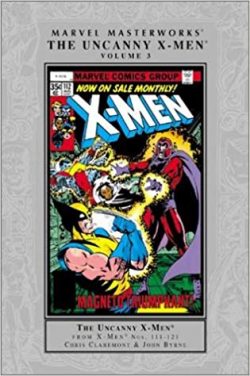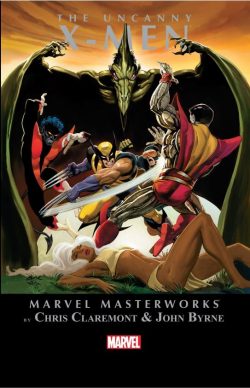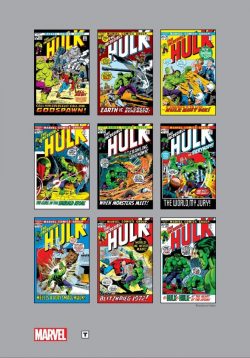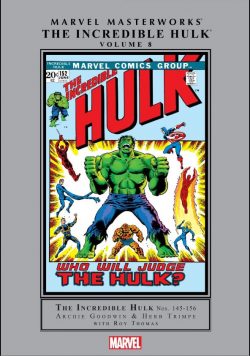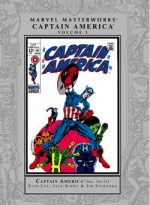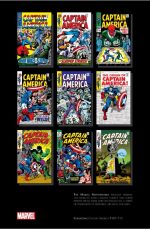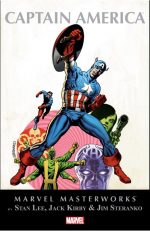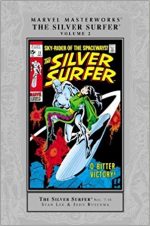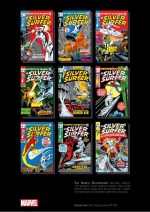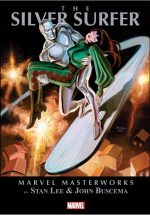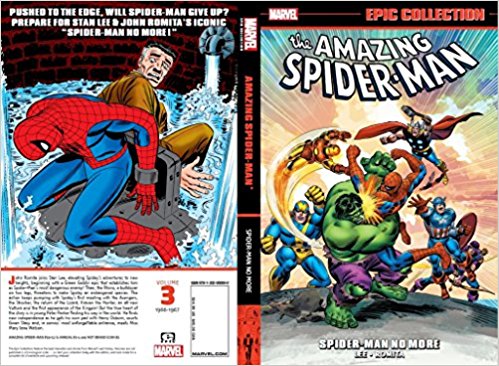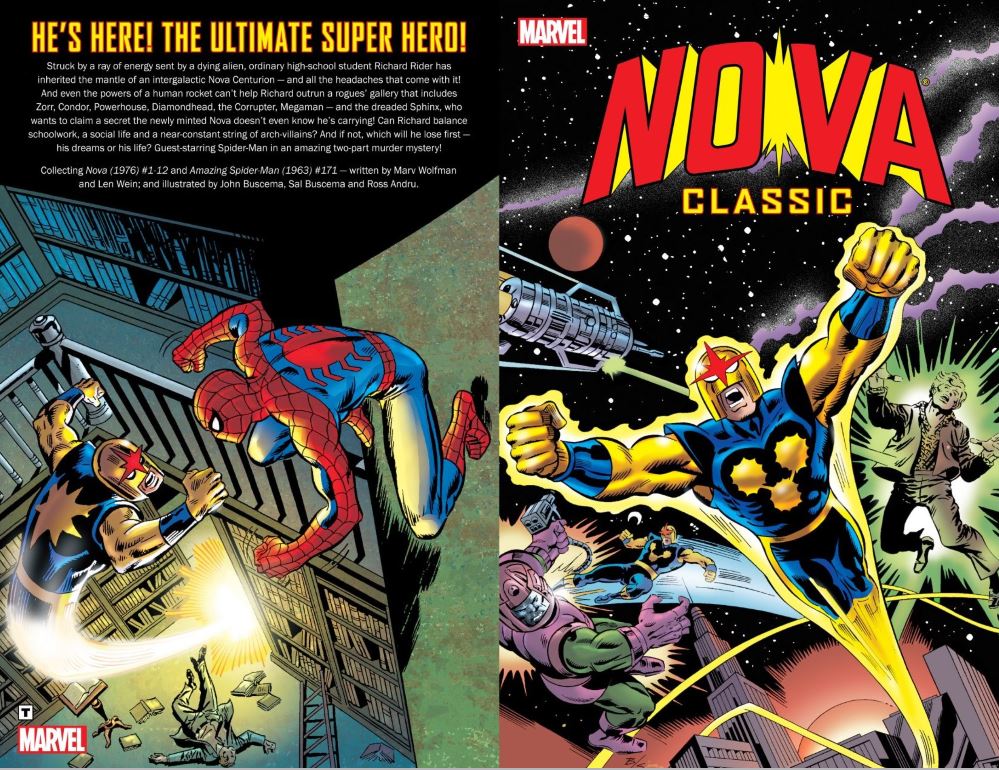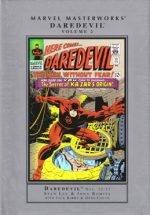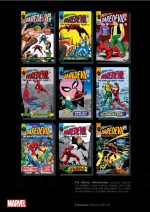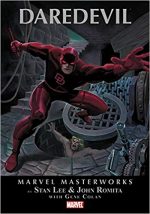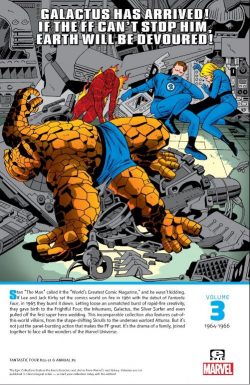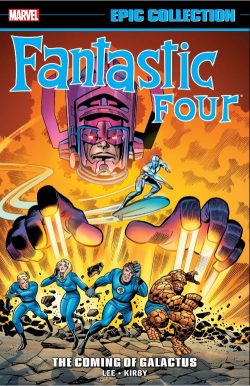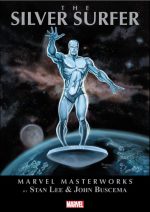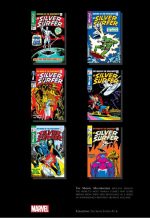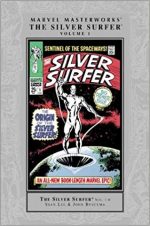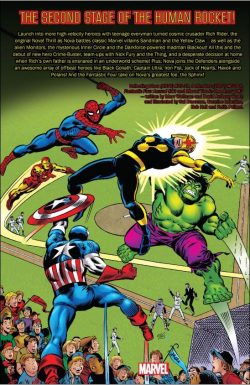
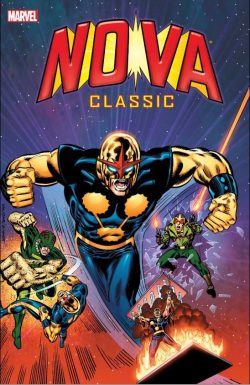
By Marv Wolfman, David Anthony Kraft, Sal Buscema, Carmine Infantino, Bob Hall, Don Perlin, Keith Pollard & various (Marvel)
ISBN: 978-0-7851-8544-4 (TPB)
By 1975 the first wave of fans-turned-writers were well ensconced at all the major American comic-book companies. Two fanzine graduates – Len Wein and Marv Wolfman – had achieved stellar successes early on, and then risen to the ranks of writer/editors at Marvel, a company in trouble both creatively and in terms of sales.
After a meteoric rise and a virtual root-&-branch overhaul of the industry in the 1960s, the House of Ideas – and every other comics publisher except Archie – were suffering from a mass desertion of fans who had simply found other uses for their mad-money.
Where other companies dwindled and eventually died and DC vigorously explored new genres to bolster their flagging sales, Marvel chose to exploit their record with superheroes: fostering new titles within a universe it was increasingly impossible to buy only a portion of…
As seen in this second no-nonsense compilation collecting Nova #13-19 plus guest shots from Defenders #62-64, Fantastic Four Annual #12 and Marvel Two-In-One Annual #3, (cumulatively covering September 1977-September 1978), the neophyte learned quickly and on-the-job, earning a sterling reputation, but never quite settled on what he should be doing…
The Man Called Nova was in fact a boy named Richard Rider. The new kid was a working-class teen nebbish in the tradition of Peter Parker – except he was good at sports and bad at learning – who attended Harry S. Truman High School, where his strict dad was the principal.
His mom worked as a police dispatcher and he had a younger brother, Robert, who was a bit of a genius. Other superficial differences to the Spider-Man canon included girlfriend Ginger and best friends Bernie and Caps, but he did have his own school bully, Mike Burley…
An earlier version, “Black Nova†had apparently appeared in the Wolfman/Wein fan mag Super Adventures in 1966, but with a few revisions and an artistic make-over by the legendary John Romita (Senior), the “Human Rocket†was launched into the Marvel Universe in his own title, beginning in September 1976.
Nova borrowed heavily from Green Lantern as well as the wallcrawler’s origin, as Rider’s life changes forever when a colossal star-ship with a dying alien aboard transfers to the lad all the mighty powers of an extraterrestrial peacekeeper and warrior. Centurion Rhomann Dey was tracking a deadly marauder to Earth. Zorr had already destroyed the warrior’s idyllic homeworld Xandar, but the severely wounded, vengeance-seeking Nova Prime was too near death and could not avenge the genocide.
Trusting to fate, Dey beams his powers and abilities towards the planet below where Rich is struck by an energy bolt and plunged into a coma. On awakening, the boy realises he has gained awesome powers… and the responsibilities of the last Nova Centurion…
This compelling trade paperback and/or digitally formatted epic resumes the non-stop action courtesy of Wolfman, Sal Buscema and Joe Sinnott, Nova #13 begins another extended tale with the introduction of debutante hero Crime-Buster in ‘Watch Out World, the Sandman is Back!’
After the once-formidable villain takes a beating, he falls under the influence of a far more sinister menace. Meanwhile, Rich Rider’s dad is going through some bad times and succumbed to the blandishments fallen of a dangerous subversive organisation…
The story continues in the Dick Giordano inked ‘Massacre at Truman High!’ as Sandman attacks Nova’s school and the mystery mastermind is revealed for in-the-know older fans, before guest-star-stuffed action-riot ‘The Fury Before the Storm!’ sees veteran illustrator Carmine Infantino take over pencilling as Tom Palmer returns to the brushstrokes.
When a bunch of established heroes attack the newbie all at once, it’s even money they’re fakes, but Nick Fury of super-spy agency S.H.I.E.L.D. is real enough and deputises the fledgling fighter for #16’s ‘Death is the Yellow Claw!’ and #17’s spectacular confrontation ‘Tidal Wave!’
As the kid comes good and saves the city of New York from a soggy demise, the long-anticipated conclusion occurs in ‘The Final Showdown!’, inked – as is ‘Beginnings’ (a short side-bar story dealing with the fate of the elder Rider) – by the agglomeration of last-minute-deadline-busters dubbed “the Tribe.â€
A new foe premieres in #19: ‘Blackout Means Business and his Business is Murder!’ opens the final large story-arc of the series, as an ebon-energy wielding maniac attacks Nova, but before that epic completely engages, the Human Rocket guest-stars in some other Marvel titles.
Although included here November 1977’s Fantastic Four Annual #12, isn’t one of them. It proclaims ‘The End of Inhumans… and the Fantastic Four’ (by Wolfman, pencillers Bob Hall & Keith Pollard and inker Bob Wiacek) and lacks any sight of Nova, but does involve the aforementioned heroes battling rogue Inhuman tyrant Thraxon, and his mysterious sponsor. That is old Nova foe the immortal Sphinx, who shares his origins and plans for the Human Rocket before being trounced by the assembled team…
Just slightly lightly less notional is Nova’s appearance in Defenders #62-64, (August to October 1978 by David Anthony Kraft, Sal Buscema, Don Perlin & Jim Mooney). ‘Membership Madness’, ‘Deadlier by the Dozen!’ and ‘D-Day!’ depict how a poorly-judged and unwanted TV documentary leads an army of superheroes – Nova included – to seek membership in the Defenders, leading to chaos and blockbusting battle with Zodiac and an army of villains trying to legitimise their crimes…
This side-bar saga comes with the first two pages of #65 (illustrated by Perlin & Bruce D. Berry) to complete the experience before moving on to a proper team-up from Marvel Two-In-One Annual #3 (September 1978).
Battling beside the Thing in a simple yet entertaining tussle with god-like cosmic marauders Nova resists mightily ‘When Strike the Monitors!’ – crafted by Wolfman, Sal Buscema, Frank Giacoia & Dave Hunt – to save an alien princess and save Earth from demolition.
Adding even more value is a selection of original art pages from Buscema & Giordano, Hall & Wiacek, Buscema & Hunt, Giacoia and Perlin, plus past collection covers by John Romita Jr. Bob Layton, Ed Hannigan, Rich Buckler and John Buscema,
There’s a lot of good, solid fights ‘n’ tights entertainment and fabulous superhero art here, and Nova has proved his intrinsic value by returning again and again. This stalwart edition is one readers can rely on to deliver the blockbusting basics in the approved Marvel Manner.
© 1977, 1978, 2016 Marvel Characters, Inc. All rights reserved.

